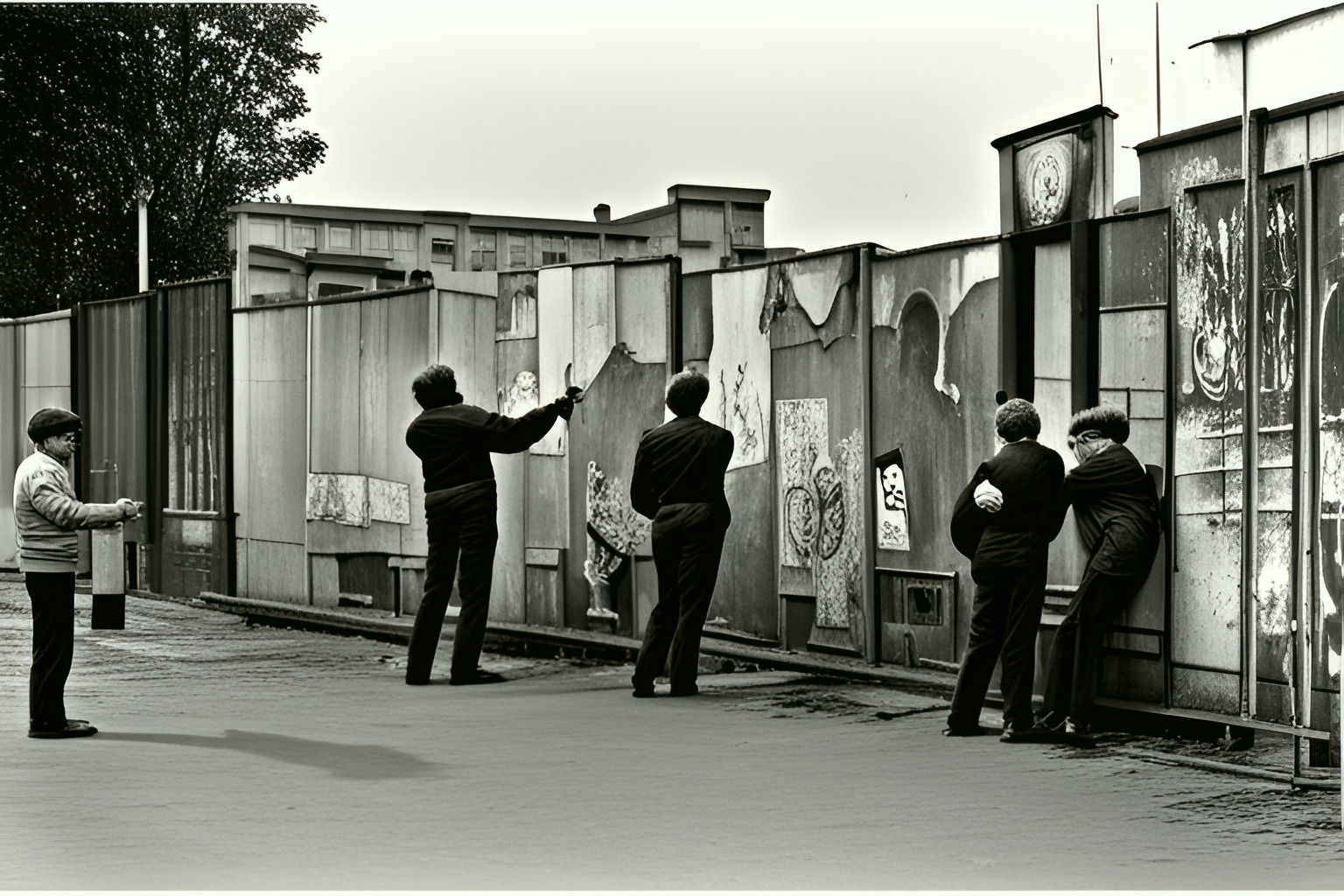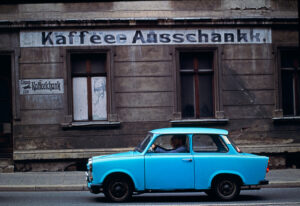Life Behind the Iron Curtain
Introduction
Life in East Berlin before the fall of the Iron Curtain (The Berlin Wall) was a tale of two contrasting worlds. As Germany became a battleground for the Cold War, the country was divided into two separate entities with vastly different economic and political systems. East Berlin, the capital city, was trapped within the confines of East Germany, a socialist state with a planned economy. Meanwhile, West Berlin and the rest of West Germany thrived as a democracy with a free-market economy.
The aftermath of World War II left Germany physically and economically in ruins. In West Germany, nearly a quarter of all housing lay destroyed, while East Germany faced similar challenges. However, the differences between the two regions became apparent as people sought a better life. The phenomenon known as the “Brain Drain” occurred, with many entrepreneurs, managers, farmers, and young professionals leaving the state-run system of the East in search of freedom and opportunity in the West.
People speak out
Christine and Manfred Schreiber, who grew up in East Germany and married there in 1979, recall their difficulties. Christine says, “[Speaking in German] Products that were difficult to produce or imported were hard to find. When shops got bananas or oranges, people had to wait in a long line, but many of them had to leave empty-handed.” Manfred adds, “[Speaking in German] Some things were hard to get. If you could buy something people wanted, you could trade it for something you needed.”
While West Germany embraced Ludwig Erhard’s plan for a market economy, East Germany clung to its socialist ideals. In West Germany, consumer goods filled the shops, improving living standards. However, East Germany experienced shortages and struggles to provide essential products. The state-run system resulted in long queues for necessities, and even when scarce items like bananas or oranges were available, many went home empty-handed.
Wolfgang Zawatski, a caretaker at the East German Apartment Museum, reflects on the economic disparities between the two parts of Berlin. He states, “[Speaking in German] The early days after WWII were a struggle for all Germans. So much of the country was destroyed, and the economy was a total disaster. In West Germany, almost one-quarter of all housing lay in ruins.”
To control the mass exodus of its citizens, the East German government created the Stasi, a large state security agency. Dr. Hubertus Knabe, a German historian, explains, “[Speaking in German] So the Stasi was the main instrument of controlling society in East Germany. Your friends, your colleagues at work, they worked for the Stasi.” The Stasi’s presence instilled fear and suspicion, as even close relationships could be compromised by informers.
Despite the strict control, East Germans found ways to glimpse the outside world. It was illegal to watch Western TV, but most East Germans managed to tune in at home, witnessing a lifestyle and prosperity that seemed unattainable under the socialist regime. The stark contrast between the East and West motivated more young, educated, and talented individuals to leave for the West, further exacerbating the Brain Drain.
The wall
The building of the Wall in 1961 marked a turning point in the division of Berlin. Wolfgang Zawatski recalls the impact of the Wall, stating, “[Speaking in German], And so, people could no longer move from East to West Berlin.” The Wall stood as a stark division symbol, with soldiers and armed guards preventing movement from East to West Berlin. Countless individuals risked their lives attempting to escape, with over 260 people losing their lives in pursuit of freedom.

The beginning of the end
East Germany struggled to keep pace with its Western counterpart as time passed. The planned economy led to poor-quality consumer goods, environmental issues, and dilapidated housing. East German products failed to meet Western standards, exemplified by the infamous Trabant, a car known for its poor quality and environmental hazards.
Despite the propaganda of the East German government, many East Germans experienced a decline in their quality of life. Christine Schreiber reflects on their challenges, saying, “[Speaking in German] The East German leaders always promised to overtake the West, but it never happened. There was economic stagnation, political repression, and widespread dissatisfaction. The socialist planned economy was failing.”
The fall of the Wall in 1989 brought about a wave of change. Peaceful protests demanding freedom and democracy gained momentum, ultimately leading to the reunification of East and West Germany on October 3, 1990. The transformation that followed the fall of the Wall demonstrated the power of individual freedom and market-driven growth.
Now
Today, as we look back on the era of East Berlin, it serves as a reminder of the challenges and struggles faced under a repressive regime. It highlights the importance of freedom, choice, and the power of a market-driven economy in improving lives and creating a prosperous society. The memory of East Berlin remains a testament to the resilience and determination of individuals to overcome adversity and embrace a better future. As Manfred Schreiber aptly puts it, “[Speaking in German] When I was young, we lived in the West, and our telephone looked just like this one. And even our telephone book looked like this. But it was much thicker. Why? Because in the West, 99 percent had a telephone, and in the East, 16 percent.” The stark difference between life in the East and the West serves as a poignant reminder of the transformations that occurred following the Wall’s fall and Germany’s reunification.
We cannot give enough credit to this Youtube creator:
The 1980s – It never ends
You gotta try this amazing link that teleports you to another random article. Try it!
